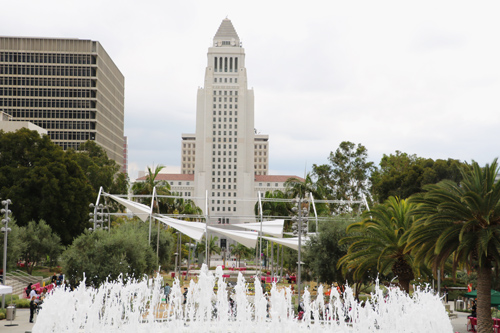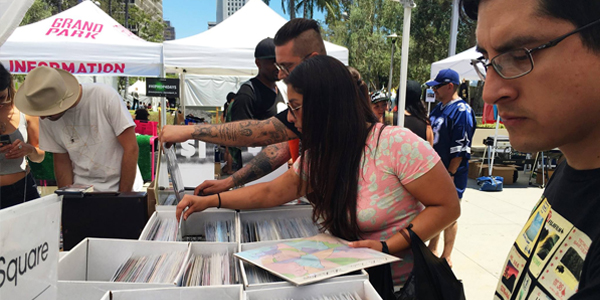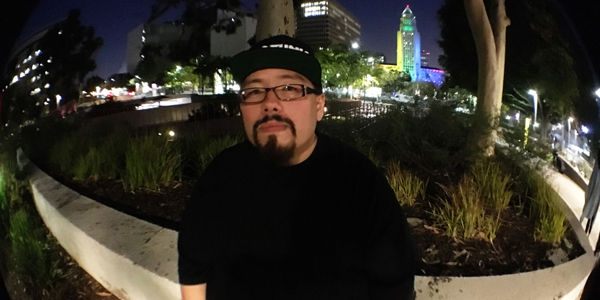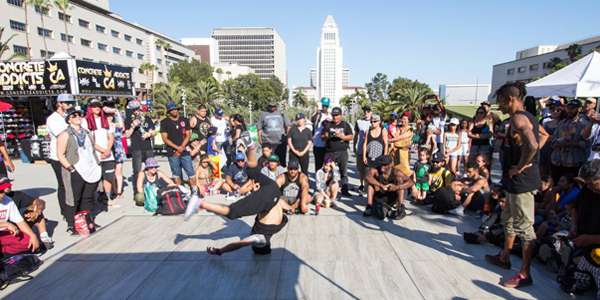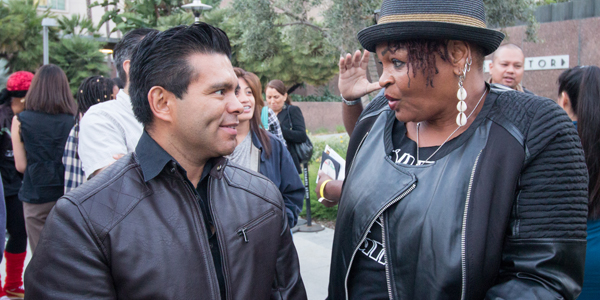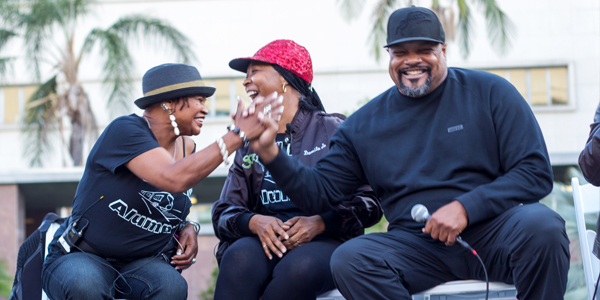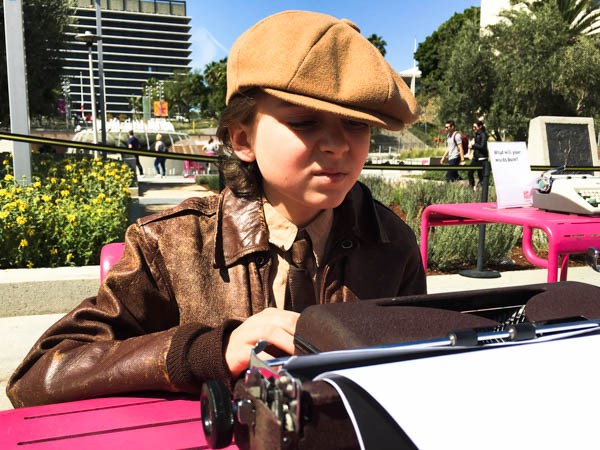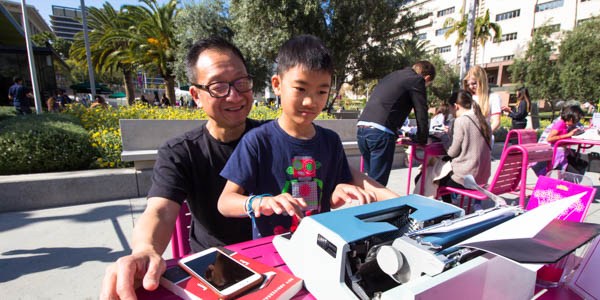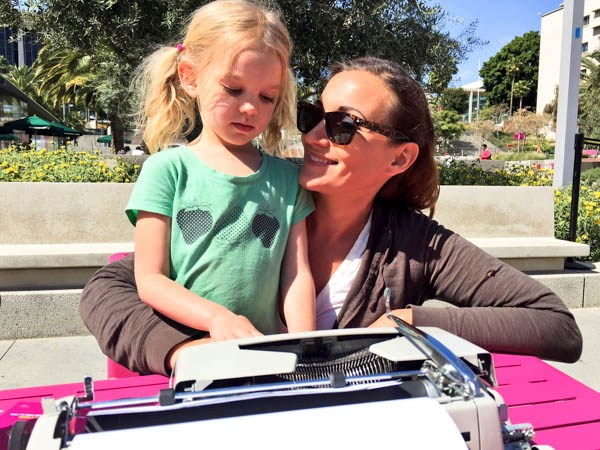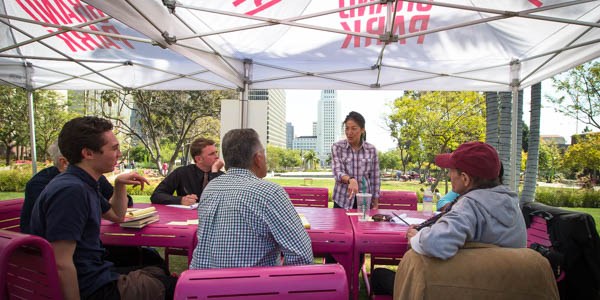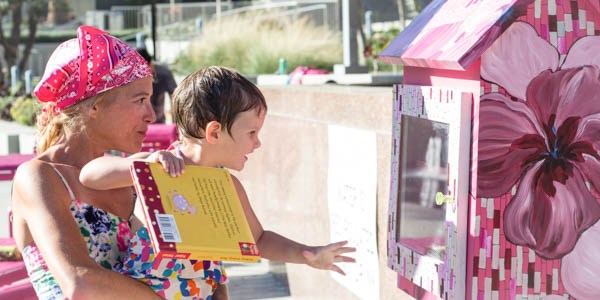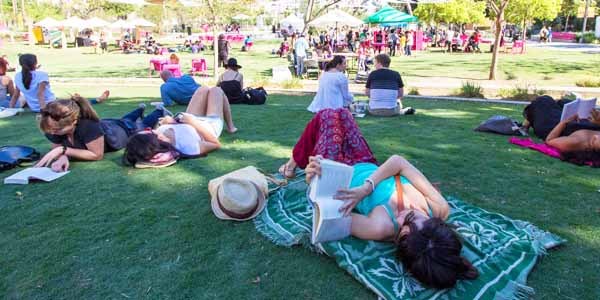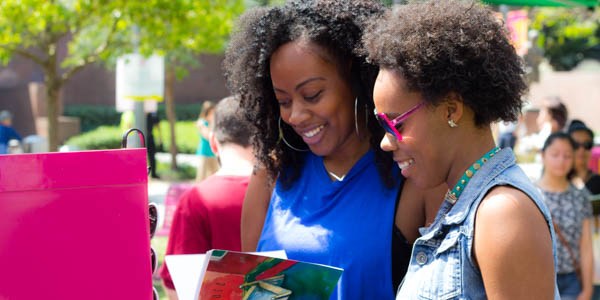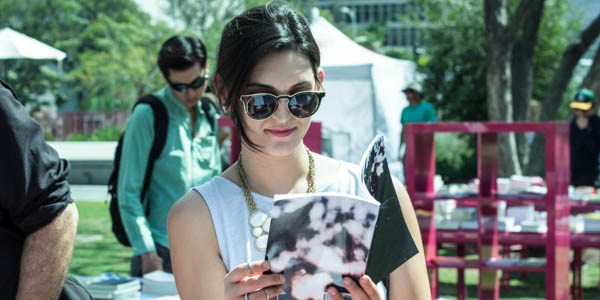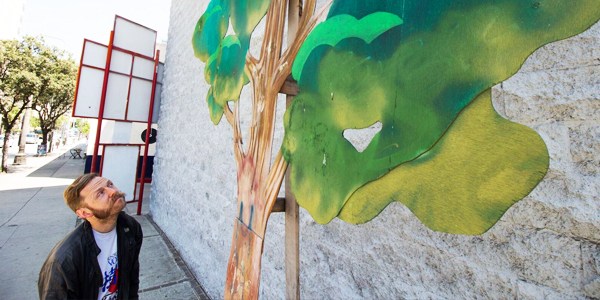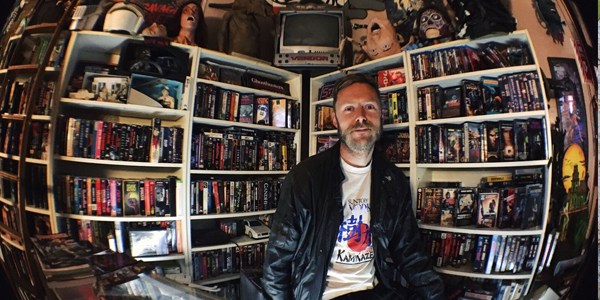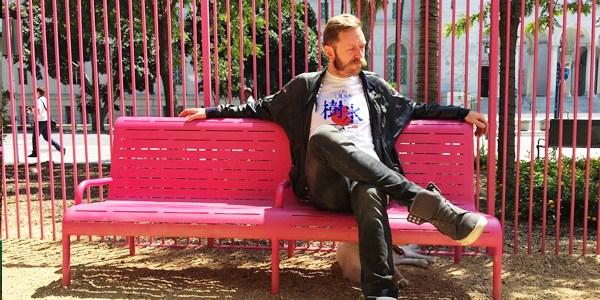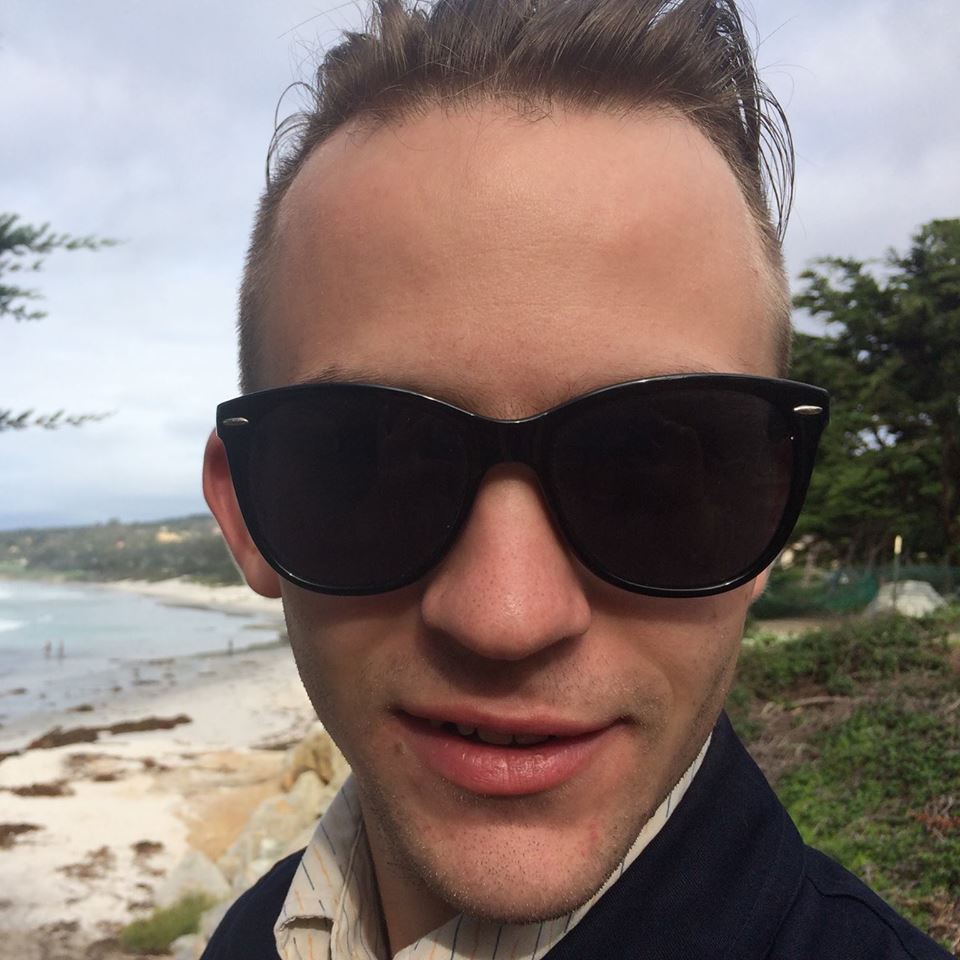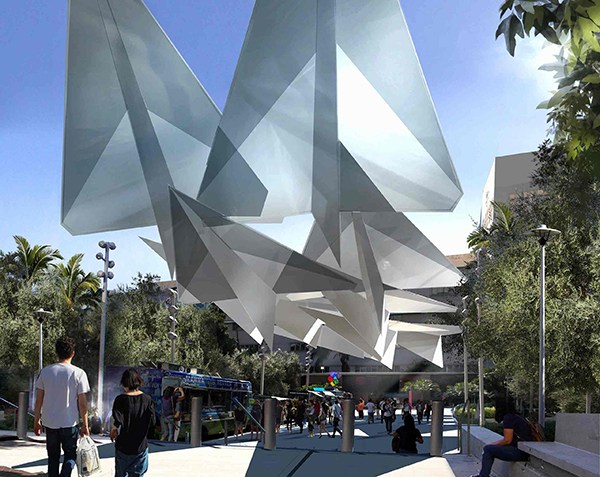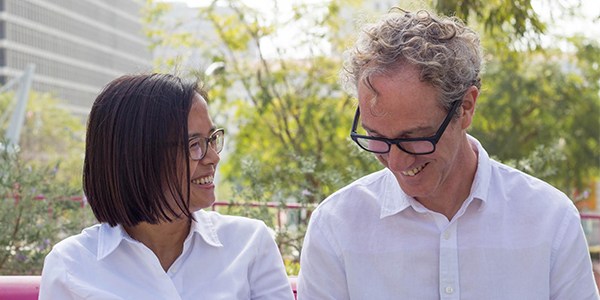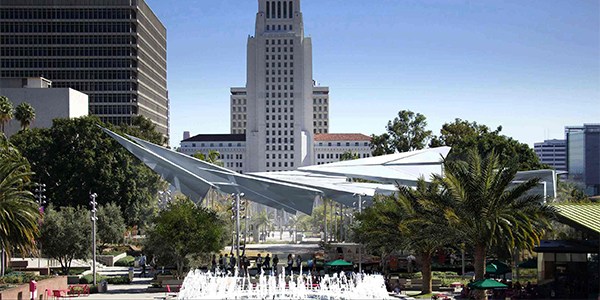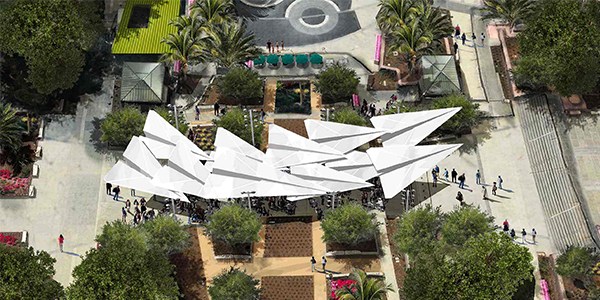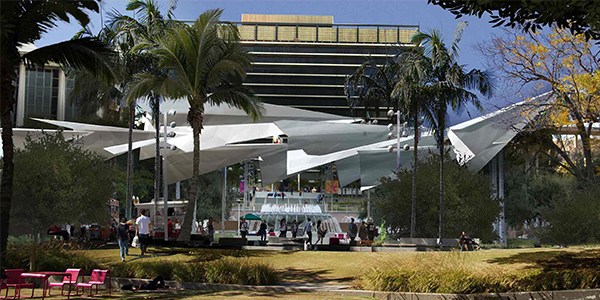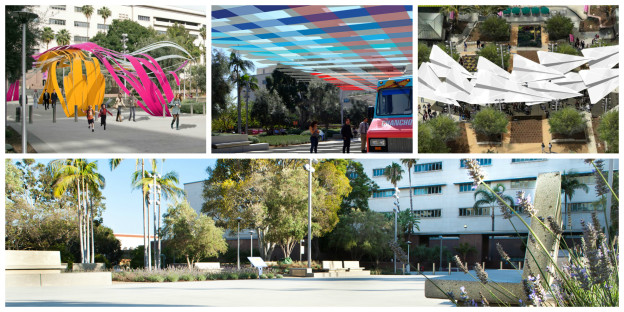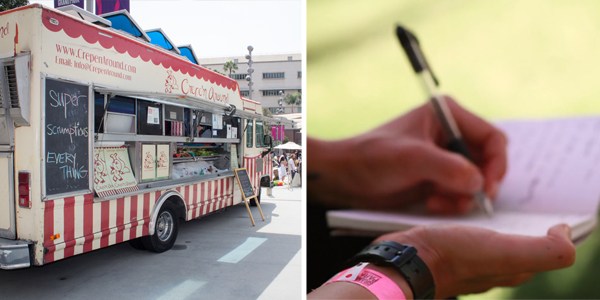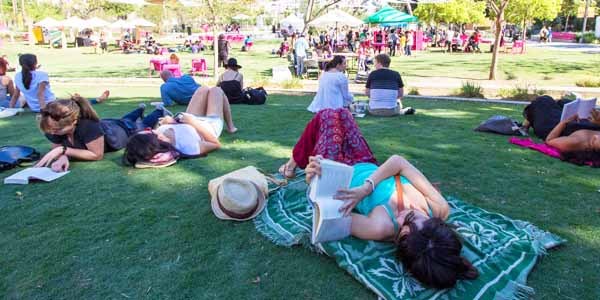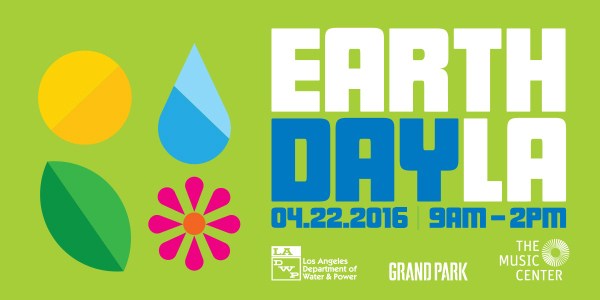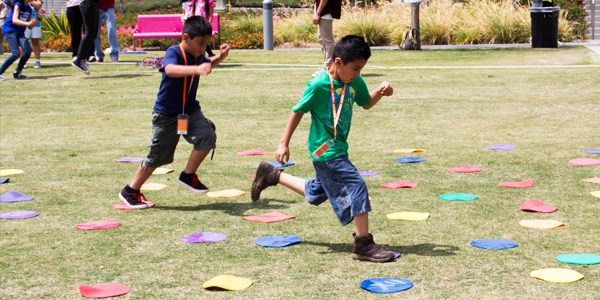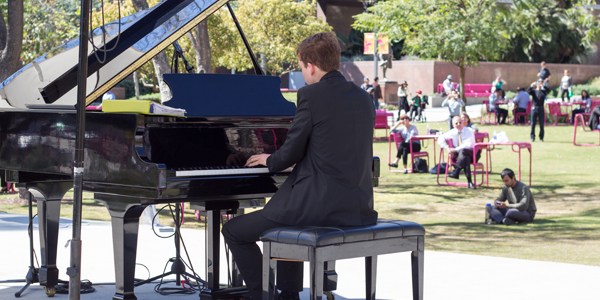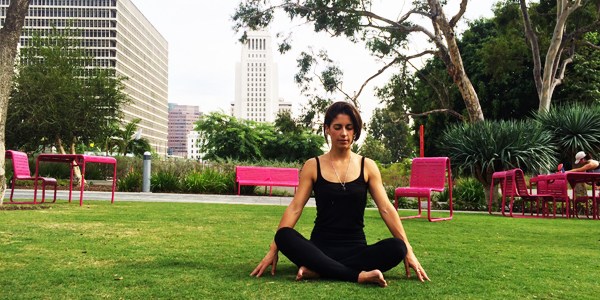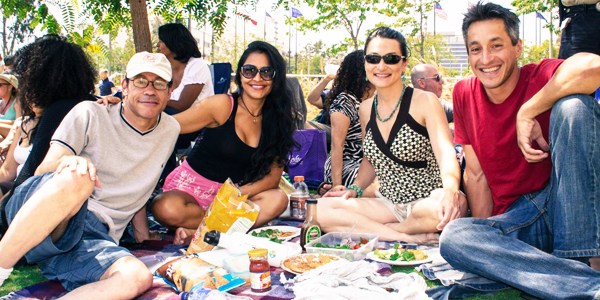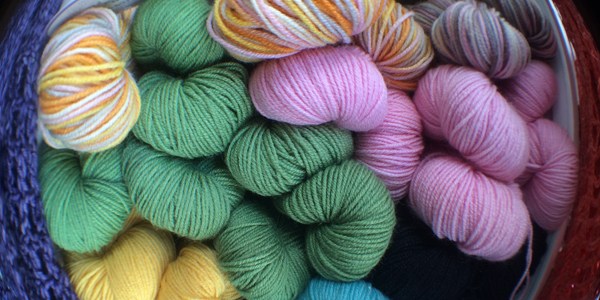It’s almost time for the 4th DOWNTOWN BOOKFEST here at Grand Park. This year, there have been even more ways to celebrate literature than ever with #SpringtimeReads. Look forward to bookshops, kid’s performances, readings, and panels – all of which center around Los Angeles and the theme “Places, Spaces and Faces.”
It goes without saying, the bookworms are excited about Downtown Bookfest. With over 30 independent presses and publishers on display in the Pop Up Bookshop curated by Writ Large Press, three stages for readings, panels and children’s performances, a dedicated children’s bookshop, and activities with some of the best literary organizations in L.A., why wouldn’t they be.
With this celebration of words, we wanted to crack open L.A.’s writers to see how their love of language and their love of L.A. live together. Here are a few glimpses:

Photo by Javier Guillen
DAVID KIPEN
David Kipen’s literary is career is quite expansive. He is not only the founder of Libros Schmibros, a teacher in UCLA’s Writing Program, and Critic at Large for the Los Angeles Times, but he is also the NORTH LAWN STAGE curator at Grand Park’s Downtown Bookfest.
DW: What is your favorite place to read in Los Angeles?
DK: On a surfboard. Off Playa del Rey. Preferably in a pod of dolphins. In this context, my lifelong inability to surf might seem, at least at first, a disadvantage. And yet experienced surfers have proven singularly disinclined to read while surfing. I can only assume that surfing experience is, if anything, a disincentive to waveborne literary enjoyment. All surfing teachers interested in an eager if distractible pupil are hereby entreated to get in touch.
DW: What is one of your favorite places to write about in Los Angeles?
DK: Just the next one. Just now I’m working on a Times op-ed for opening weekend of the Expo Line. Writers seldom get to choose their own headlines, but I’m thinking of it as “’When We Reach the City’: Ray Bradbury, L.A. Urbanism, and Stations of the Crosstown Train.” Which may help explain why writers seldom get to choose their own headlines. So my favorite L.A. place to write about at the moment is anywhere you can sit, nosh, bask, and watch the trains go by. Candidates include Goldstein’s Bagel Bakery in Arcadia, Cemitas Poblanas Elvirita in Boyle Heights, Nicole’s in South Pasadena, and now The Coop Pizza at Palms and National. All L.A. hungry ferroequinologists with ideas of their own are hereby entreated to get in touch.
DW: Who is your favorite L.A. writer?
DK: My favorite L.A. writer is always the next one — even if he’s ten years gone, like the L.A. historian, John Cheever pen pal and Central Library savior John D. Weaver. Or screenwriter Mayo Simon, who wrote my some of formative favorites, like Why Man Creates, Phase IV and Futureworld, and who’s still kicking out there somewhere. Or Geoff Dyer, who just got here, and will be fun to watch as he discovers the city. All unbought champions of unsung L.A. literature are hereby entreated to get in touch.
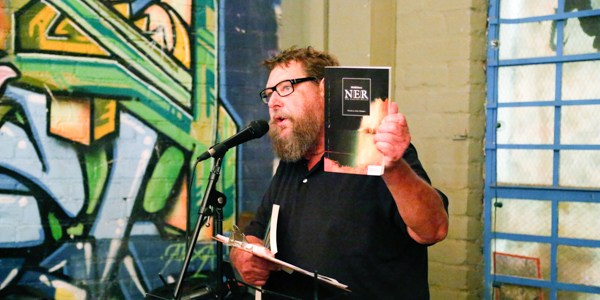
LOU MATHEWS
Lou is an LA writer who has done just about everything you can do with a pen. As a novelist, his breakthrough LA Breakdown was honored by LA Times as 1999’s ‘Best Book’. As a journalist his work has appeared in LA Magazine, LA Times, Mother Jones and LA Weekly. His screen and stage plays have graced local theatres and international festivals alike. As an educator, Lou teaches for the UCLA Extension Writer’s Program and has been a National Endowment for the Arts fellow in fiction.
DW: What is your favorite place to read in Los Angeles?
LM: For a writer that’s a two part question, there’s the reading you do and the readings you give. I love to read late at night, when the house is quiet. Usually at the dining room table. When I read my work aloud, two favorites, Skylight Books, my home-bookstore, and the auditorium at the Skirball Center, where I read once a year for the UCLA publication party. Best acoustics in town.
DW: What is one of your favorite places to write about in Los Angeles?
LM: Two neighborhoods, one real, one imaginary. Toonerville was where I spent most of my time when I was a kid, most of my friends lived there. It’s a neighborhood bordered by Los Feliz Boulevard to the south, the L.A. River to the west, San Fernando road to the east and roughly Colorado Blvd to the north. The imaginary neighborhood, which I’ve been writing about for thirty years, is Shaky Town, which is also the title of a book I’ve just finished. Shaky Town, as I said, is an imaginary neighborhood, which means I’m not bound by actual boundaries, but it is roughly based on two real neighborhoods, Glassell Park and Highland Park, where I went to high school and misspent my youth. My first novel, L.A. Breakdown, about illegal street racing in Los Angeles, mostly takes place there, centering on the monumental Drive-in restaurant, Van de Kamps, at the corner of San Fernando Road and Fletcher Drive, which was the central hub for street racers in the 1960’s. I loved the neighborhood growing up and that affection abides. Great taco trucks and restaurants, great street scene, great people.
DW: Who is your favorite L.A. writer?
LM: I can’t answer that with one name. A lot of great writers, F. Scott Fitzgerald and Budd Schulberg, lived here and wrote about the place. John Steinbeck lived in Eagle Rock for a while. Raymond Carver once worked in concessions at the Cinerama Dome theater, but like Steinbeck, didn’t write much about the place. I think of favorite L. A. writers in terms of generations. The early days, I would have to say Nathanael West. Day of the Locust is, I think, the best book ever written about Hollywood. After that, Joan Didion, Wanda Coleman, Charles Bukowski and Lucia Berlin. Currently, I have a lot of faves. In no particular order, Steve Erickson, Susan Straight, Michael Jaime-Becerra, Aimee Bender, Dana Johnson, Jim Gavin, J. Ryan Stradal, Lisa Glatt, Meghan Daum (even though she now lives in NYC). They all bring a lot to the table. By this afternoon, I’ll remember ten more. There’s a lot going on in L.A. right now.
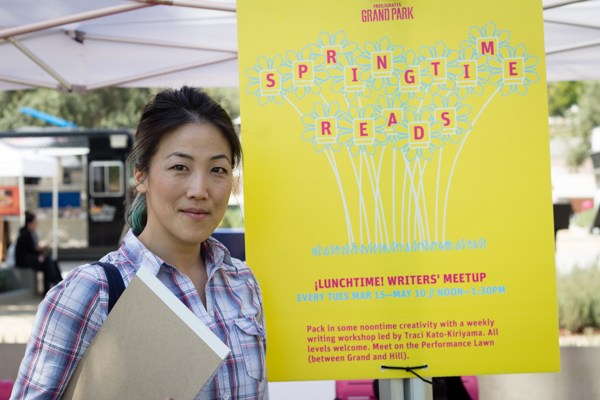
TRACI KATO-KIRIYAMA
traci is a multi-disciplinary artist, writer, educator and community organizer who is one half of the PULLproject ensemble. She also leads the weekly Grand Park’s Writer’s Meetups as part of #SpringtimeReads (every TUES noon-1:30pm now thru May 10)
DW: What is your favorite place to read in Los Angeles?
tkk: one of my favorite places to read in LA –
There’s a coffee chain spot (Coffee Bean) right next to an exit off the 405 freeway in North Torrance. It has a good window in the front and I had been going there for quite a while to write and read before I realized that was exactly where my grandpa’s farm was. He had completely started over with land there, after losing everything when he was put away in Manzanar during WWII. In the 50s the government came back and told him he had to get out quickly to make way for the Crenshaw exit for the new freeway. He pretty much had it with the government after that. But I end up going there regularly to work and read at that front window where I can see the cars in a constant stream toward the freeway. It’s odd, maybe, but I feel a kind of comfort there. Maybe it’s like I’m looking out for signs of my grandpa or he’s watching out for me. Or, more likely, his spirit is totally done with that spot and I’m just trying to reclaim it. 😉
DW: What is one of your favorite places to write about in Los Angeles?
tkk: one of my favorite places to write about in LA –
Little Tokyo is easily a longtime muse of mine. There are endless characters, past and present, who made and make it what it is today. I’m fascinated by its long history of redevelopment – an ebb and flow of popularity, abandonment, scarcity, darkness, abundance and vibrancy. Most people walk through it for the tourist destination it most definitely has become and they pass by both – ghosts and living beings they have no idea are the tireless builders of a small, but mighty gem of our great city. I’ll likely spend a lifetime writing about J-Town with utter curiosity and fierce love.
DW: Who is your favorite L.A. writer?
tkk: That question astounds me. Can anyone pick a favorite in any given city? But especially, I think, in Los Angeles? That’s what makes it a great question if it is to open up a conversation, on not only writing, but what the rest of the country thinks of LA writers…and then of LA itself. I’m a third generation LA gal and I happen to live a few houses down from one of my writing heroes – she is in her 80s and was one of the first Asian American women to be published in an anthology. Several blocks north and then exactly half a mile east are two other writers, both playwrights I love dearly for totally different reasons. And we all live in Gardena.
See what I mean? People may have imagined I was talking about the Valley or, I don’t know, Silver Lake? But I think of my little neighborhood and I think of the webs and concentric circles extending from that point – neighborhood after neighborhood filled with writers who form, inspire, teach and fill me in ways as sprawling as this city’s geographic reach. Baldwin Park to Venice, Redondo Beach to Toluca Lake, I never stop searching for my favorite writers in LA because that’s how big this city actually is. (And i love it.)

– Duncan Woodbury, Grand Park’s Blogworm




